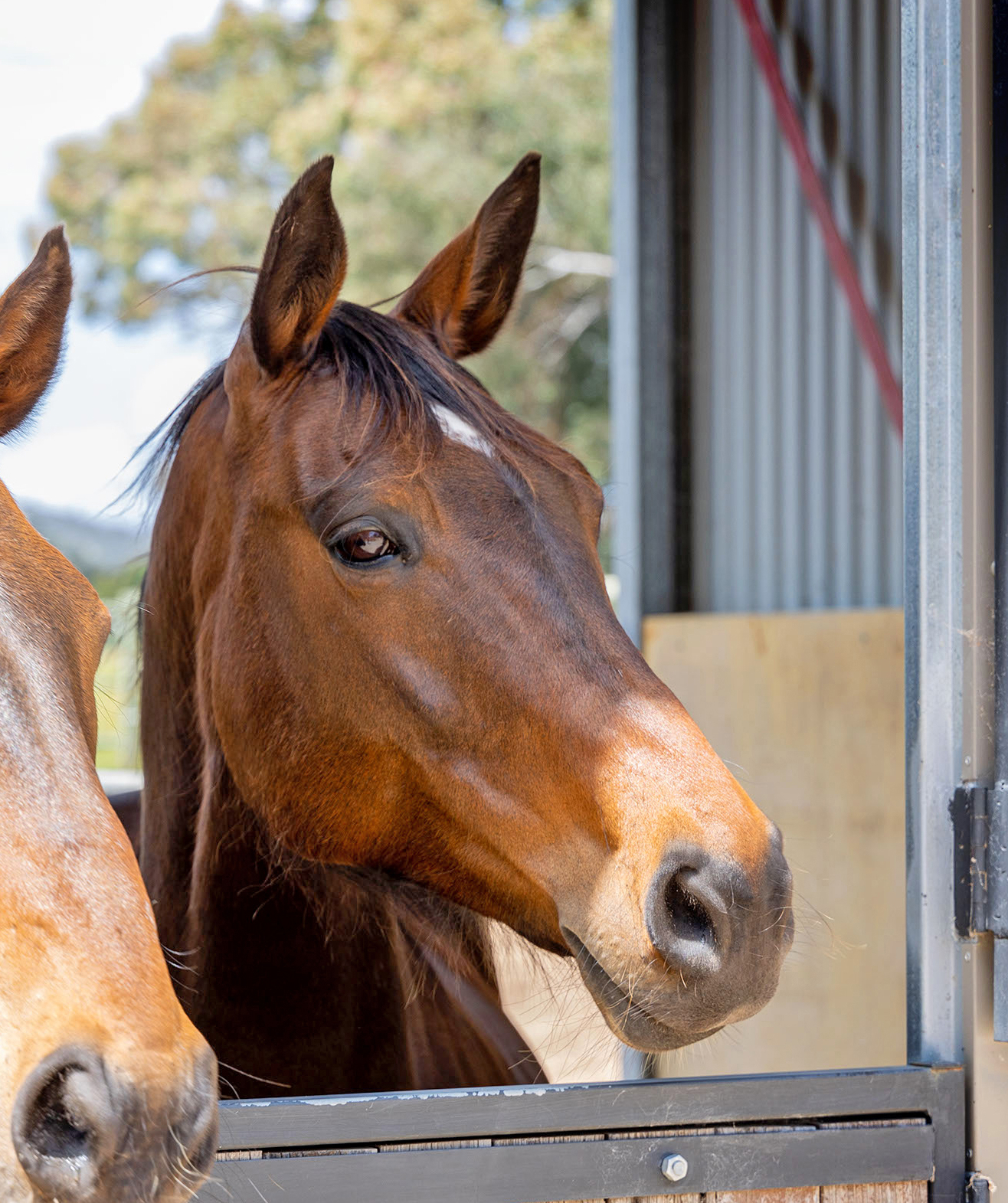-
 Look and report
Look and reportHendra virus is a reportable disease in WA.
Animal diseasesHendra virus is a serious zoonotic disease.
Strict precautions must be taken by veterinarians when collecting samples from animals suspected of having Hendra virus. See the Australian Veterinary Association's advice on veterinary personal biosecurity.
In WA, there have been no confirmed cases of Hendra virus infection in any domestic animals. The presence or suspicion of Hendra virus must be reported in Western Australia (see here, how to report).
Updated: 27 November 2024View alerts centre
Hendra virus is a virus carried by flying-foxes (fruit bats) in Australia. While the virus does not visibly harm flying-foxes, it can spread from flying-foxes to horses, and occasionally from infected horses to people. The virus can cause highly fatal disease in horses and humans that become infected.
Hendra virus was first diagnosed in Australia in 1994. Cases of Hendra virus have only been reported in Australia. The virus can be carried by all four species of flying-foxes found on mainland Australia:
- black flying-fox
- spectacled flying-fox
- little red flying-fox
- grey-headed flying-fox.
The little red flying-fox and black flying-fox can be found in northern Western Australia and the Gascoyne with the little red flying- occasionally being sighted in the Mid-West and the northern Wheatbelt regions of Western Australia.
Hendra virus has been detected in flying-foxes in NSW, Queensland, Victoria, South Australia and Western Australia, and horse and human cases of Hendra virus have occurred in Queensland and NSW. Hendra virus infection has been confirmed in two dogs on properties in NSW where horses had been infected with Hendra virus. The dogs did not display any signs of illness.
The likelihood of a Hendra virus infection in Western Australia in horses and humans is considered low because of the relatively low concentrations of flying foxes and the low numbers of horses that live in the same area as flying-foxes.
There is no specific treatment or cure for infection with Hendra virus.
A vaccine (Equivac HeV®) is available for use in horses. DPIRD does not require horses to be vaccinated against Hendra virus and there are no import restrictions on unvaccinated horses into Western Australia. Some veterinarians who work with horses in high risk areas may only work with horses that are vaccinated.
No signs have been reported in infected flying-foxes.
In horses, the onset of disease is rapid and characterised by:
- fever (above 38.5°C)
- increase in heart rate
- rapid deterioration with either respiratory and/or nervous signs
- respiratory signs include laboured breathing, clear, frothy and/or blood-stained nasal discharge
- neurological signs include, wobbly gait, lack of coordination, apparent loss of vision, aimless walking in a dazed state, head tilting and circling, muscle twitching, urinary incontinence, inability to rise.
It may take between 5 to 16 days to see signs of disease in a horse from the time the horse is infected with Hendra virus. Horses may be able to shed the virus for 2 days prior to any signs of disease.
Snake bite or other poisonings can present similarly to Hendra virus.
Other reportable diseases such as anthrax and Murray Valley encephalitis can also present like Hendra virus as well as exotic diseases such as African horse sickness, equine influenza and West Nile Virus.
Flying-fox urine is likely to be the most important route of transmission of Hendra virus, although other flying fox body fluid, such as placental fluid can also play a role.
Hendra-virus spill-over from flying-foxes to horses is thought to occur when horses eat feed or pasture or drink water contaminated with infected flying-foxes body fluids.
Close contact between horses or horses and people is required for spread of infection between horses or to people. All confirmed cases in people to date have been following high levels of exposure to infected horses body fluids (i.e. performing post-mortems without wearing appropriate personal protective equipment or being exposed to respiratory excretions).
There is no evidence of human to human, flying-fox to human, flying-fox to dog or dog to human transmission.
Prevention of transmission should be based on avoiding potential contact with flying-foxes wherever possible:
- Keep domestic animals away from where flying-foxes are feeding on fruiting or flowering trees or roosting.
- Protect horse feed and water from contamination by flying-foxes.
Horse owners should consult their veterinarian about the option of vaccinating their horses against Hendra virus if there is a risk their horses could have contact with flying-foxes, or if their horses travel to Queensland or northern NSW, or if their horses have regular contact with horses from other properties other than their own.
It is advisable to isolate horses that have been in areas where there are flying-foxes or in contact with horses that have been exposed to flying-foxes for 20 days and monitor for signs of Hendra virus during that time.
Know the signs and risk factors for Hendra virus and immediately isolate horses showing signs consistent with Hendra virus infection from other horses, people and pets until veterinary opinion can be obtained.
How to report Hendra virus
If you suspect Hendra virus, see signs of disease or death consistent with Hendra virus in your horses, you must report it. There are 3 ways you can do this.
Any person that suspects they have been exposed to Hendra virus must contact their local medical practitioner or the Department of Health Western Australia, Communicable Disease Control Directorate.
